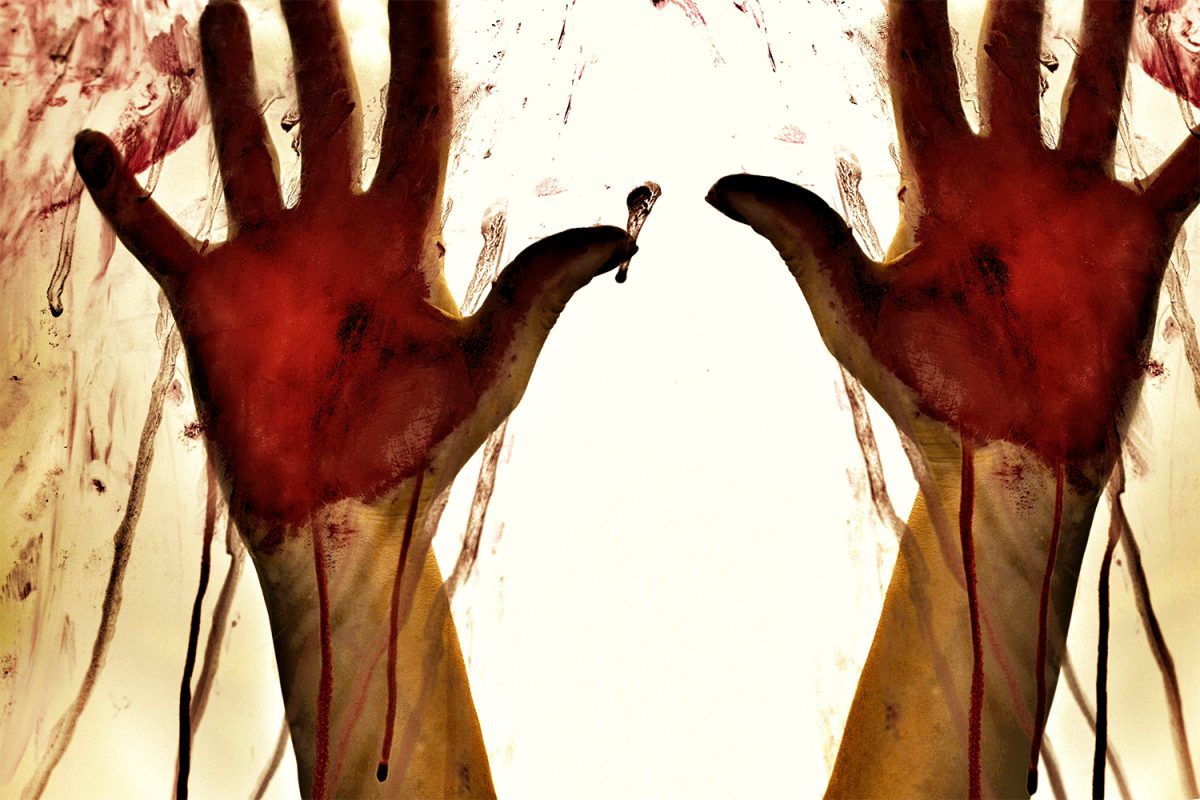A good horror movie might make you scream. It might leave you double-checking your closet at night or sleeping with the lights on.
But it should not make you vomit and walk out of the theater.
Earlier this month, “Terrifer 3” screened to select audiences, inciting a chain of walkouts and visceral reactions. Although horror movies are known for making people uneasy and question everything for some time, “Terrifier 3” took it to the extreme.
Intentional violence and gore are necessary in many films to convey severity and message.
The crimes in “Red Rooms” were beautifully done, with almost every element of gore shown off-screen, and instead highlighting the themes of obsession and infatuation. Rather than trying to shock viewers — as done in “Terrifer 3” — movies like this tend to find the importance of using violence as a form of commentary.
The Terrifier trilogy, on the other hand, lacks any meaningful rhetoric or purpose—it is violent for the sake of violence. Like other exploitative films such as “Hostel” and “Talk to Me,” “Terrifier” takes gore to an extreme level.
Yet, film — especially horror — is not meant for superficial aesthetics.
Jacob Mayer, student success and engagement coordinator for the UI School of Journalism and Mass Communication, studied film throughout their undergraduate career and is an avid horror movie enthusiast. Having watched more than 300 movies this year alone, Mayer is well-versed in horror trends.
“A good horror movie shows, rather than tells. The genre is used to challenge folks’ ideas of society in a digestible way,” they said. “Most early horror is extremely queer or race coded. Even to this day, I think the best horror deals with these issues, like Jordan Peele’s ‘Get Out.’”
I like the occasional slasher film as much as the next person, but finding a balance between gore and substance is important. “Get Out” was the perfect mix of unsettling jump scares and commentary on racism and the fetishization of Black Americans.
Yet, the backbone of the film benefitted from the director — Jordan Peele. With a fresh, diverse take on the genre, Peele handled the topic of race in a complex and almost taboo way.
Like many creative spheres, horror is predominantly male-dominated. Many iconic figures and killers are men. While no one seems to remember the women in the original “Scream,” fans are entranced by Billy Loomis — the serial killer. Loomis was sexualized by fans, while the women were often victimized and portrayed as helpless.
“Psycho” is often regarded as a groundbreaking horror classic that set new standards for the slasher genre, but its portrayal of women reveals significant shortcomings. Marion’s infamous murder scene, featuring close-ups of her naked body, blurs the line between male pleasure and female suffering. Before her death, she is subjected to the male gaze, reduced to merely an object.
This narrative perpetuates harmful stereotypes and invites viewers to engage in violence against women. Too often, films depict women in vulnerable positions that serve little purpose beyond producing shock.
“Terrifier 3” raises important questions about gender representation and the responsibilities of filmmakers. It seems that in horror, sex and death are often intertwined. In older slasher movies, a woman’s likelihood of dying was often linked to her sexuality — the more sexualized, the more likely she was to die.
Thankfully, this is changing.
“I can’t say as much about it as a nation, but international horror has reached new heights, especially now that more and more women are directing the genre,” Mayer affirmed.
In the U.S., only 14.7 percent of directors are women, and approximately 5.9 percent of horror films are directed by women. Globally, these numbers are steadily increasing.
Films like “Cuckoo” and “Woman of the Hour” aim to subvert these old tropes — portraying women as resilient survivors or complex characters. Women directors often prioritize character development and emotional arcs, creating more complex characters that resonate with audiences.
Anna Kendrick’s directorial debut, “Woman of the Hour” on Netflix, exemplifies this shift. As much as the movie deals with the true events of notorious serial killer Rodney Alcala, Kendrick focuses on the victims rather than indulging in the gruesome details. The film emphasizes the psychological and physical threats women face.
As Kendrick seamlessly demonstrated, horror should be a powerful storytelling device, not a tool for sensationalism.



